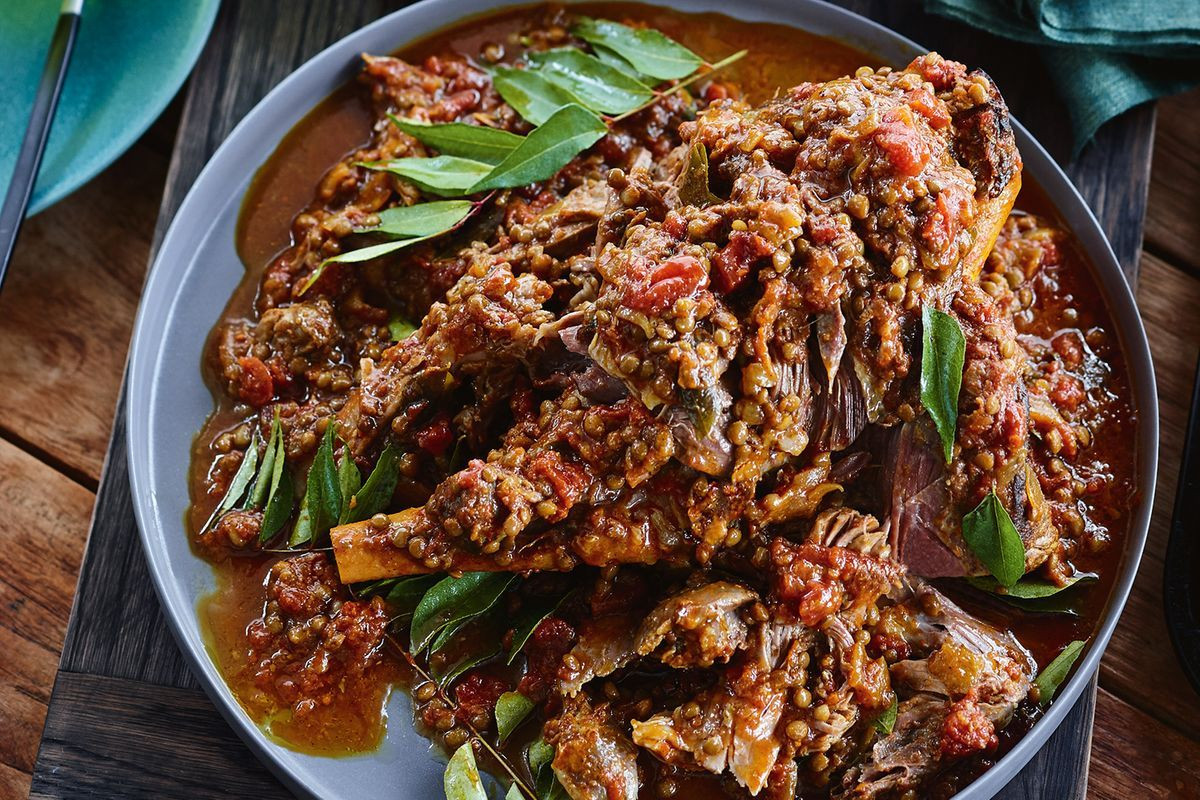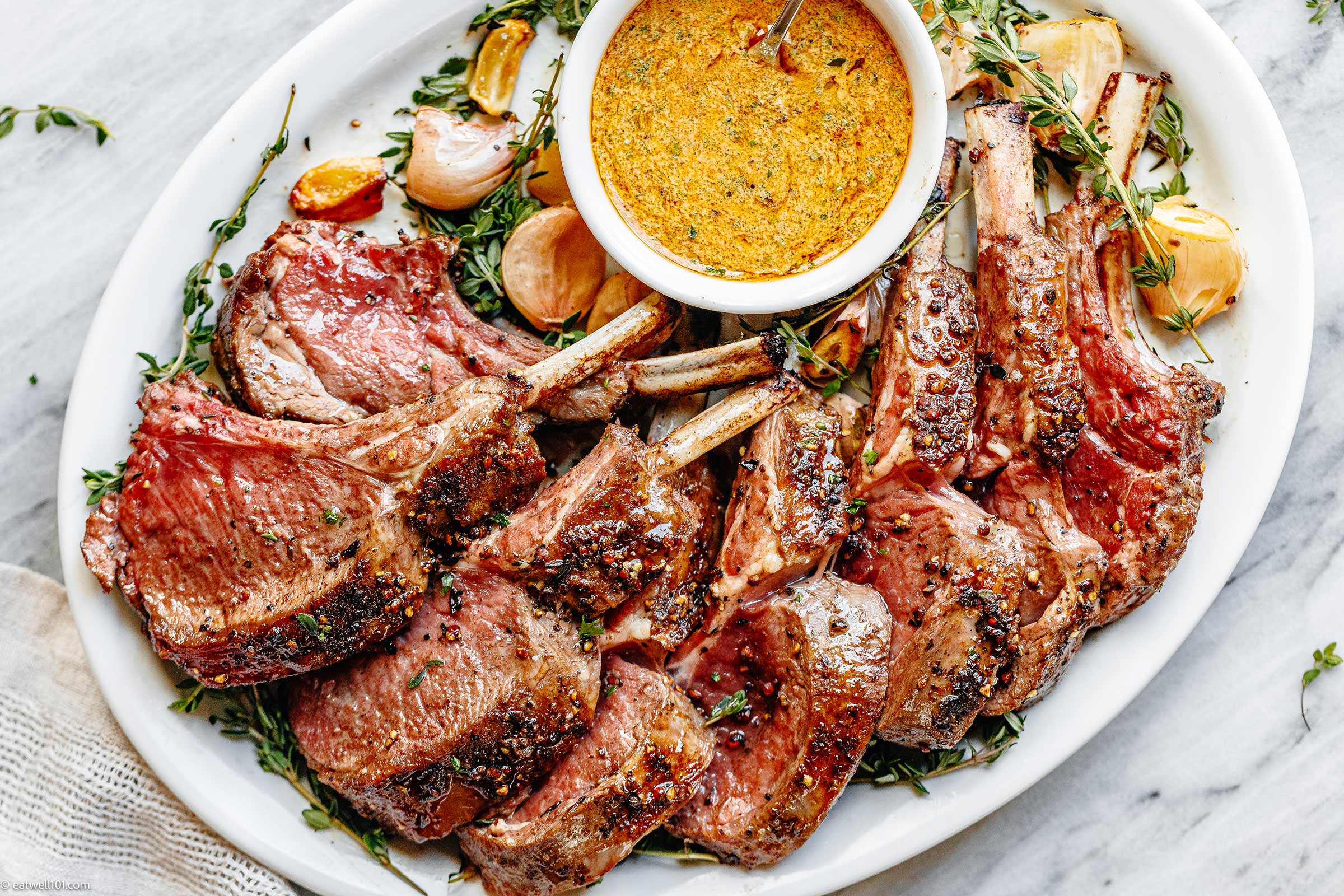Embark on a culinary adventure as we delve into the captivating world of Indian lamb recipes. From its cultural significance to regional variations and modern interpretations, we will explore the intricacies of this delectable cuisine. Prepare your taste buds for an unforgettable journey as we uncover the secrets of these aromatic and flavorful dishes.
Indian lamb recipes have a rich history, deeply intertwined with the cultural fabric of the country. Each region boasts unique interpretations, influenced by local ingredients and culinary traditions. Whether it’s the fiery Rogan Josh from Kashmir or the succulent Saagwala from Punjab, the diversity of these dishes is a testament to the culinary artistry of India.
Overview of Indian Lamb Recipes

Indian lamb recipes hold a prominent place in the country’s culinary landscape, reflecting its rich cultural heritage and diverse regional influences. Lamb, prized for its succulent texture and distinctive flavor, has been an integral part of Indian cuisine for centuries.
The history of Indian lamb recipes dates back to ancient times, with influences from various civilizations and culinary traditions. Mughlai cuisine, brought to India by the Mughal Empire, significantly enriched the repertoire of lamb dishes, introducing intricate spice blends and cooking techniques.
Over time, regional variations emerged, each region developing its own unique style of preparing lamb.
Regional Variations in Indian Lamb Dishes
North Indian lamb recipes are characterized by their robust flavors and generous use of spices. Popular dishes include Rogan Josh, a rich and flavorful lamb curry cooked with aromatic spices, and Saag Gosht, lamb cooked in a creamy spinach gravy.
In contrast, South Indian lamb dishes tend to be milder in flavor, with a focus on coconut and spices like curry leaves and mustard seeds. Hyderabadi cuisine, from the Deccan region, is known for its succulent lamb dishes, often cooked in a dum style that imparts a unique smoky flavor.
Eastern Indian lamb recipes, influenced by Bengali cuisine, often feature delicate flavors and a subtle blend of spices. Popular dishes include Kosha Mangsho, a slow-cooked lamb dish with a rich gravy, and Mutton Rezala, a creamy and flavorful curry with a hint of sweetness.
Western Indian lamb recipes, particularly those from Maharashtra, are known for their use of spicy and flavorful masalas. Popular dishes include Kolhapuri Mutton, a fiery lamb curry, and Varhadi Mutton, a flavorful dish cooked with a blend of spices and herbs.
Common Ingredients and Techniques in Indian Recipes
intro
Essential Spices
Indian cuisine is renowned for its vibrant and aromatic spice blends. Some of the most commonly used spices include:
-
-*Cumin
A warm and earthy spice that adds depth and smokiness to dishes.
-*Coriander
A citrusy and slightly sweet spice that balances out the heat of other spices.
-*Turmeric
A vibrant yellow spice that gives dishes a warm and slightly bitter flavor, as well as antioxidant properties.
-*Red chili powder
Provides varying degrees of heat, depending on the type used.
-*Garam masala
A blend of spices, typically including cinnamon, cloves, cardamom, and black pepper, that adds warmth and complexity.
Yogurt and Other Dairy Products
Yogurt, buttermilk, and other dairy products play a crucial role in Indian cooking.
They are often used to marinate meats and vegetables, tenderizing them and infusing them with flavor. Dairy products also add richness and depth to gravies and sauces.
Aromatic Herbs and Fresh Produce
Fresh herbs, such as cilantro, mint, and fenugreek, are liberally used in Indian dishes to add freshness and vibrancy. Vegetables like onions, tomatoes, and ginger form the base of many dishes, providing a flavorful foundation.
Popular Indian Lamb Recipes
Lamb dishes are celebrated in Indian cuisine for their rich flavors and tender textures. Here are some popular Indian lamb recipes with step-by-step instructions and cooking tips:
Rogan Josh
Ingredients:
- 1 kg lamb, cut into cubes
- 1 cup yogurt
- 2 onions, chopped
- 1 tomato, chopped
- 1 tablespoon ginger-garlic paste
- 1 teaspoon turmeric powder
- 1 teaspoon red chili powder
- 1 teaspoon garam masala
- 1/2 cup water
- Salt to taste
Instructions:
- Marinate the lamb in yogurt, ginger-garlic paste, turmeric powder, and salt for at least 30 minutes.
- Heat oil in a heavy-bottomed pot and brown the onions.
- Add the lamb and cook until it is no longer pink.
- Stir in the tomatoes and cook until they are soft.
- Add the red chili powder, garam masala, and water.
- Bring to a boil, then reduce heat and simmer for 1-2 hours, or until the lamb is tender.
Saagwala
Ingredients:
- 1 kg lamb, cut into cubes
- 1 bunch spinach, chopped
- 1 onion, chopped
- 1 tomato, chopped
- 1 tablespoon ginger-garlic paste
- 1 teaspoon turmeric powder
- 1 teaspoon red chili powder
- 1 teaspoon garam masala
- 1/2 cup water
- Salt to taste
Instructions:
- Marinate the lamb in yogurt, ginger-garlic paste, turmeric powder, and salt for at least 30 minutes.
- Heat oil in a heavy-bottomed pot and brown the onions.
- Add the lamb and cook until it is no longer pink.
- Stir in the tomatoes and cook until they are soft.
- Add the spinach, red chili powder, garam masala, and water.
- Bring to a boil, then reduce heat and simmer for 1-2 hours, or until the lamb is tender and the spinach is wilted.
Biryani
Ingredients:
- 1 kg lamb, cut into cubes
- 1 cup basmati rice
- 1 onion, chopped
- 1 tomato, chopped
- 1 tablespoon ginger-garlic paste
- 1 teaspoon turmeric powder
- 1 teaspoon red chili powder
- 1 teaspoon garam masala
- 1/2 cup water
- Salt to taste
Instructions:
- Marinate the lamb in yogurt, ginger-garlic paste, turmeric powder, and salt for at least 30 minutes.
- Heat oil in a heavy-bottomed pot and brown the onions.
- Add the lamb and cook until it is no longer pink.
- Stir in the tomatoes and cook until they are soft.
- Add the rice, red chili powder, garam masala, and water.
- Bring to a boil, then reduce heat and simmer for 15-20 minutes, or until the rice is cooked and the lamb is tender.
Health Benefits and Nutritional Value of Indian Lamb Recipes
Indian lamb recipes are not only delicious but also offer numerous health benefits. Lamb meat is a rich source of protein, essential vitamins, and minerals. It is also low in saturated fat and cholesterol compared to other red meats.The spices used in Indian lamb dishes, such as turmeric, cumin, and coriander, have antioxidant and anti-inflammatory properties.
These spices can help reduce the risk of chronic diseases such as heart disease and cancer.To make healthier versions of Indian lamb recipes, consider the following tips:* Use lean cuts of lamb, such as the loin or shoulder.
- Trim excess fat from the meat before cooking.
- Use healthy cooking methods, such as grilling, roasting, or baking.
- Add plenty of vegetables to your lamb dishes.
- Limit the use of ghee or butter in your recipes.
Cultural and Social Aspects of Indian Lamb Recipes

Indian lamb dishes hold a significant place in the cultural and social fabric of India. They are deeply intertwined with festivals, celebrations, and family gatherings.
During festivals like Eid-ul-Adha and Bakrid, lamb dishes are central to the feast. The sacrifice of a lamb is considered an act of devotion, and the meat is shared with family, friends, and the less fortunate.
Social Significance
Sharing lamb dishes with family and friends is a gesture of love and hospitality. It signifies unity, camaraderie, and the strengthening of bonds. Lamb dishes are often prepared for special occasions, such as weddings, anniversaries, and birthdays, to mark the joyous moments of life.
Etiquette Tips
When serving and eating Indian lamb dishes, it is customary to follow certain etiquette tips:
- Always wash your hands before and after eating.
- Use your right hand to eat, as the left hand is considered impure.
- If you are sharing a dish, use a separate spoon or fork to serve yourself.
- Do not talk while eating.
- Finish everything on your plate, as it is considered disrespectful to leave food.
Modern Interpretations of Indian Lamb Recipes
Modern interpretations of Indian lamb recipes are a testament to the ever-evolving nature of Indian cuisine. Chefs are experimenting with new ingredients and techniques, resulting in innovative dishes that pay homage to tradition while embracing contemporary flavors and presentations.
Incorporating New Ingredients
Chefs are incorporating ingredients from around the world into their lamb dishes. This includes using Middle Eastern spices like za’atar and sumac, as well as Southeast Asian ingredients like galangal and kaffir lime leaves. The result is a rich and complex flavor profile that tantalizes the taste buds.
Molecular Gastronomy Techniques
Molecular gastronomy techniques are also making their way into Indian lamb recipes. Chefs are using liquid nitrogen to create frozen foams and gels, and sous vide to cook lamb to perfection. These techniques allow for precise control over the cooking process, resulting in dishes that are both visually stunning and incredibly flavorful.
Examples of Innovative Indian Lamb Dishes
Here are a few examples of innovative Indian lamb dishes from contemporary restaurants:
Lamb Rogan Josh with Saffron Foam
A classic lamb dish elevated with a saffron foam that adds a delicate floral note.
Tandoori Lamb with Green Mango Chutney
Tandoori lamb marinated in yogurt and spices, served with a refreshing green mango chutney.
Lamb Vindaloo with Black Garlic
A spicy vindaloo made with black garlic, which adds a smoky and umami flavor.These dishes showcase the creativity and innovation of modern Indian chefs, who are pushing the boundaries of traditional cuisine.
Last Word
Our exploration of Indian lamb recipes has illuminated the rich tapestry of flavors, cultural significance, and culinary innovation that define this beloved cuisine. From traditional favorites to contemporary creations, the versatility of lamb in Indian cooking is truly remarkable. As we bid farewell to this aromatic journey, may the flavors and memories linger, inspiring us to recreate these culinary wonders in our own kitchens.
FAQ Corner
What is the secret to tender lamb in Indian recipes?
Marinating the lamb in yogurt or buttermilk helps break down the tough fibers, resulting in tender and succulent meat.
How do I balance the spices in Indian lamb dishes?
Start with a small amount of spices and gradually add more to taste. Remember, you can always add more, but it’s difficult to reduce the intensity once added.
Can I substitute lamb with other meats in Indian recipes?
Yes, you can substitute lamb with goat or beef in most recipes. However, the flavor profile may vary slightly.
